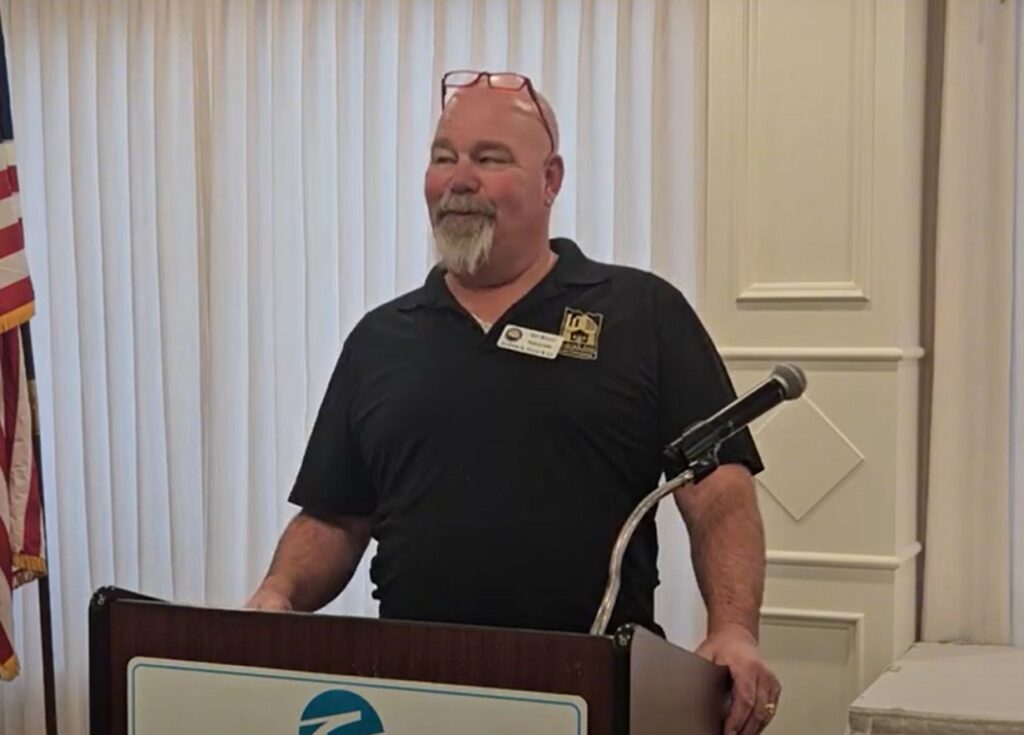At a recent Ocean County Business Association (OCBA) meeting, Art Bailey, a licensed public adjuster, shared valuable insights into the insurance claims process and the critical role that public adjusters play in ensuring homeowners and business owners receive fair settlements. His talk highlighted the importance of detailed documentation, the complexities of working with insurance companies, and why being prepared before disaster strikes can make all the difference.
Why Hire a Public Adjuster?
Many policyholders assume that after experiencing a fire, flood, or storm damage, their insurance company will fairly assess their claim and provide compensation for repairs and replacements. However, insurance companies often require policyholders to do much of the work themselves, including compiling detailed inventories of lost or damaged items.
Art explained that most homeowners are not prepared with an inventory of their possessions. In his nearly ten years as a public adjuster, he has never had a client who had a full inventory ready to submit. Instead, homeowners are left trying to piece together a list of what was lost—often from the remains of a fire-damaged home or water-soaked basement.
A public adjuster steps in to handle this overwhelming task, ensuring that every structural loss and personal item is accounted for, accurately valued, and properly submitted to the insurance company.
The Claims Process: How Public Adjusters Help
- Detailed Documentation – Public adjusters create comprehensive reports, including photos and written descriptions of structural damage and contents inventory.
- Valuation of Losses – Items must be researched and priced based on their current market value. Additionally, insurance companies apply depreciation, which requires homeowners to estimate the age of their belongings.
- Advocating for the Policyholder – Many insurance companies ask homeowners to prepare their own lists of damages without offering guidance on how to accurately value items. A public adjuster ensures that nothing is missed and that every dollar a policyholder is entitled to is claimed.
- Negotiating with Insurance Companies – If a dispute arises, claims may go to appraisal, where both sides present their valuation to an independent appraiser for a binding decision. In rare cases, legal action may be necessary.
How Often Do Claims Go to Dispute?
Art shared that less than 10 percent of claims go to appraisal, and even fewer require legal action. However, when disputes do arise, having an experienced public adjuster makes a significant difference. In one recent case, a commercial property in Seaside Heights suffered roof damage. The insurance company initially denied the claim, arguing the roof was too old to qualify for coverage. With legal support, Art’s team successfully recovered over $200,000 for the property owner.
What Is the Cost of Hiring a Public Adjuster?
Public adjusters are paid on a contingency basis. This means they receive a percentage of the claim only after the policyholder is compensated. For example, if an insurance company agrees to pay $100,000 for damages, and the public adjuster’s fee is 10 percent, the policyholder would pay $10,000 out of the settlement amount.
This arrangement ensures that public adjusters are incentivized to maximize the payout and that homeowners and business owners do not have to pay upfront fees.
Common Insurance Policy Oversights
During the discussion, a key point raised was what people might not realize is missing from their home insurance policies.
Important Add-Ons to Consider:
- Jewelry and Collectibles – Many homeowners assume that valuables such as jewelry, baseball cards, or rare collectibles are fully covered under their standard policy. However, these items often require separate riders and professional appraisals to be insured for their actual value.
- Adequate Structural Coverage – Property owners should ensure that their policies reflect current construction costs, as material and labor prices fluctuate.
- Replacement Cost vs. Actual Cash Value – Policies may reimburse either replacement cost value (RCV) or actual cash value (ACV). RCV pays the full replacement amount once the insured replaces the item, while ACV factors in depreciation, which can significantly lower the payout.
How Insurance Companies Determine Payouts
Art explained that insurance companies use industry-standard software, such as Xactimate, to estimate repair and replacement costs. While this software is generally accurate, it does not always account for regional price variations.
For example, property values on Long Beach Island are significantly higher than in other parts of Ocean County, yet insurance companies may not adjust estimates accordingly. A public adjuster can challenge discrepancies and ensure that policyholders receive accurate compensation based on local market conditions.

The Value of a Public Adjuster
A public adjuster works for homeowners and business owners, not the insurance company. Their role is to ensure claims are fully documented, fairly valued, and properly paid out.
Art emphasized that when disaster strikes, policyholders should not go through the process alone. Hiring a professional can make the difference between a denied claim and a successful recovery.
If you have experienced property damage or want to be proactive in protecting your home or business, consider consulting with a licensed public adjuster to review your insurance policy and ensure you are adequately covered.
